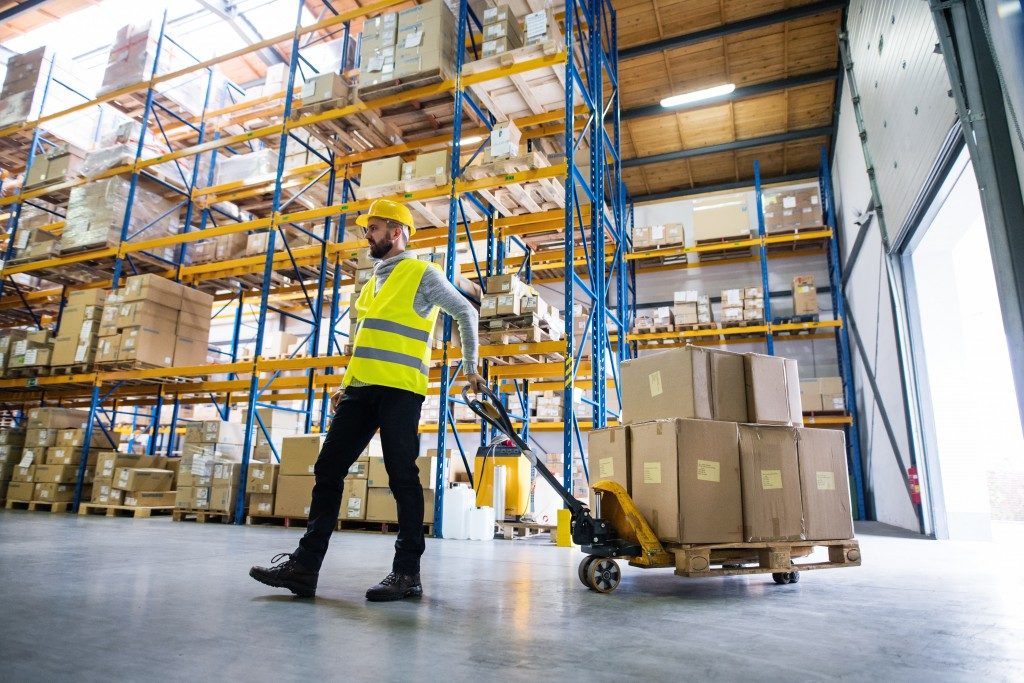Warehouses are required to follow numerous safety regulations and standards to prevent accidents, injuries, and fatalities from occurring in and around the workplace. And yet, despite the mandatory adherence to these laws and standards, unfortunate incidents still occur in the workplace, which somehow suggests that there is a need for warehouses to go beyond the bare minimum safety requirements and take further steps to ensure workplace safety.
As such, one of the best ways to improve and guarantee warehouse safety is to be aware of the common hazards that every warehouse needs to watch out for and address immediately.
#1 Cracks, Holes, and Uneven Concrete Flooring
Warehouses are generally constructed with durable concrete floors that have slip-resistant and waterproof protective coatings. And yet, whether it’s due to regular wear and tear, poor construction, overloading, or even earthquakes, a warehouse’s concrete floor may end up becoming uneven or have cracks and holes. These hazards can result in tripping incidents that could injure warehouse workers and also damage any machinery and equipment such as forklifts (and the goods they’re moving/transporting).
As such, warehouse staff needs to be wary of any cracks, holes, and uneven levels in the warehouse floor so it can be addressed immediately. Luckily, your warehouse wouldn’t have to overhaul the entire surface or slab as there are companies in Colorado that offer concrete rehab services to restore damaged flooring without having to replace it.
#2 Forklifts
Forklifts are arguably one of the most import pieces of machinery in every warehouse. Yet, forklifts and other powered industrial trucks cause around 85 fatalities and 35,000 injuries each year across various industries, not only in warehouses, according to the Occupational Safety and Health Administration (OSHA). And it’s easy to see why; forklifts have bladed arms, can make quick sharp turns, and often carry very heavy materials and goods.
That said, warehouses need to hire trained and certified forklift operators, and also to have their operators undergo further safety and operational training (especially when upgrading or changing forklift models). It’s also just as imperative to instruct forklift operators to keep constant communication with other warehouse workers for others to stay out of their way and avoid any due to lack of warning and communication.

#3 Falling Objects
Even a small rock falling from a considerable height can hurt or even result in serious injuries, now imagine how much damage bigger and heavier objects falling from their rack can cause. Some of these objects may even contain hazardous or caustic materials that can further cause injuries and damage.
To avoid these types of incidents, heavier objects should always be stored at lower levels and should be securely stacked. A forklift operator should always be careful when storing and retrieve objects from these heights. Workers should watch out for haphazardly-stored packages and materials so they can be adjusted and secured. If some of these objects require manual handling, workers should be duly trained on the proper way of handling these materials from warehouse racks and shelves, and should only be allowed to do so with safety equipment.
#4 Loading and Unloading Docks
Lastly, one of the most common areas for accidents to occur when it comes to logistics and material handling industries is the loading/unloading areas. A worker can be injured by forklifts, falling materials, and even the loading vehicle.
Proper training and supervision can go a long way to preventing incidents in the loading docks. It’s also important to observe the following precautions: only allowing those involved in the loading/unloading process to be in the area, ensuring that the unloading/loading vehicle is parked securely, and establishing constant communication in the area.
Conclusion
A warehouse can still be a dangerous workplace even when a company complies with industry safety standards, so it’s important to take the extra steps towards guaranteeing warehouse safety, starting with inspecting the workplace for any of the aforementioned hazards.







